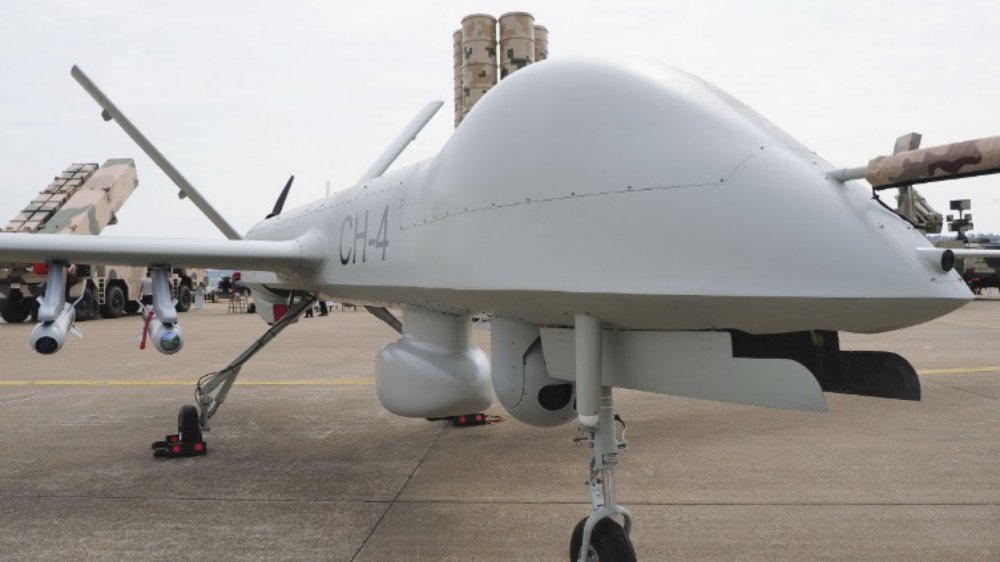China is making significant headway in terms of international arms sales, with the country having surged into fifth place globally and now trailing only the USA, Russia, France and Germany respectively. However, there are numerous signs that the quality of Chinese military products is lacking, with even US government officials weighing in on the topic.
Indeed, R. Clarke Cooper, Assistant Secretary of State for Political-Military Affairs at the US State Department, lambasted Russian and Chinese arms sales in a speech before defence attaches and ambassadors in Washington DC on 31 October 2019.
China came in for the sternest rebuke, with Cooper asserting:
“…Through a combination of cut-price systems such as unmanned aerial systems, predatory financing mechanisms and sometimes outright bribery, China is using arms transfers as a means of getting its foot in the door – a door that, once opened, China quickly exploits both to exert influence and to gather intelligence.”
Cooper continued, warning, “To quote another Latin phrase – caveat emptor! – Buyer, beware. We have seen countries around the world leap at the chance to obtain high-tech, low-cost defensive capabilities, only to see their significant investments crumble and rust in their hands.”
One of the most prominent examples in recent times comes from Jordan, which purchased six CH-4B unmanned combat aerial vehicles (UCAV) produced by the ChinaAerospace Science and Technology Corporation (CASC) in 2016. However, within just three years, the kingdom had put them up for disposal, with their sale advertised in June.
Shephard Media reported Royal Jordanian Air Force sources telling the UK-based defence publisher back in November 2018 that “it was not happy with the aircraft’s performance and was looking to retire them”. They were flown by the air force’s No. 9 Squadron.
The CH-4B, which has an 18.5-meter wingspan and can carry 345kg of weapons on four hardpoints, resembles the MQ-1 Predator produced by General Atomics Aeronautical Systems Inc (GA-ASI).
Other known users of the CH-4 UCAV are Algeria, Egypt, Saudi Arabia, the UAE and Iraq. Interestingly, the Iraqi Air Force is down to just one operational CH-4 out of an original fleet of ten. This problem was revealed in a report by the US Inspector-General in August, which blamed maintenance issues for the literal decimation of the fleet that was being used to fight ISIS.
China has exported more than 30 CH-4s to date since its introduction to the market in 2014. Each aircraft is estimated to cost USD4 million, which is a fraction of what an American drone would cost. A Chinese research paper stated that the CH-4 worldwide had accumulated 10,000 flight hours and more than 1,000 sorties. It also claimed more than 400 missiles had been fired in combat with an accuracy level of 96%. Of course, this naturally raises questions as to how China knows so much about how foreign customers are using their aircraft.
The author asked the CEO of GA-ASI, the maker of the Reaper and Predator used by the USA, whether his company feared competition from China. Linden Blue replied,
“I think they’re a competitor in some countries…In Europe, it’s not an issue, but in Asia-Pacific, they are a competitor,” although this is only on a selective basis. He shared that smaller countries to which the US has not been paying a lot of attention and who face budget challenges may go for cheaper Chinese systems countries.
Nevertheless, he assessed that Chinese systems are “a little lower end at the moment. As far as we know, they’re not really in the turboprop class yet. They’ve built some but they’re not really competitive in that class yet and, in this [Asia- Pacific] region if you don’t have a little bit of engine power to get around the weather in the wet season, you’re kind of limiting yourself to not flying that much.”
Bad press has not stopped China finding new customers, however. Indonesia, for instance, was revealed as a new user of the CH-4B UCAV within the past few months.
According to Stockholm International Peace Research Institute (SIPRI) data, China sold eight CH-4, 39 CH-3, 16 Wing Loong 1, five Wing Loong 2, two WJ-600 and 18 ASN-209 UAVs overseas from 2008-17.
UAVs have been a fast-growing area of sales for China, but the country has a wide range of products available. SIPRI released figures earlier this year covering arms sales for the five-year period from 2014-18. Chinese sales were up just 2.7% compared to the preceding five-year period, but 70% of its sales currently go to Asia and Oceania, 20% to Africa and 6.1% to the Middle East. In fact, Pakistan is the major recipient of Chinese weapons, accounting for 37% of all sales from 2014-18.
ANI has regularly encountered Chinese manufacturers such as Norinco, AVIC, Poly Technologies and the China. Shipbuilding industry Corporation (CSIC) at numerous defence exhibitions around Asia. Routinely the company representatives at these exhibitions are evasive and occasionally even downright dishonest. About 5-10 years ago there were often sales representatives on duty who could barely converse in English, but in the past five years or so Chinese companies have begun to up their marketing game.
Nonetheless, Chinese companies continue to carry a stigma for offering poor service to foreign militaries, and products that are not always reliable or that do not perform as advertised. Of course, the reason that draws many customers to China in the first place – price – cannot be underestimated either. Even though clients know that a Chinese helicopter, fighter or tank may not be as reliable as an American one, they can be sure it will certainly be much cheaper.
Furthermore, China will sell anyone anything with no questions asked. This is attractive to countries like Thailand, whose relationship with the USA ebbs and flows depending on when the last military coup occurred.
Source: ANI

